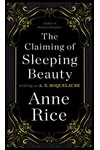Step into the provocative world of the Sleeping Beauty Stories, where a classic fairy tale transforms into a daring exploration of desire and power! Penned by Anne Rice under the pseudonym A.N. Roquelaure, this quartet of erotic novels reimagines Sleeping Beauty’s tale in a medieval fantasy realm, blending lush prose with bold themes of BDSM, sexual awakening, and self-discovery. Far from the gentle fairy tale, this series captivates with its unapologetic dive into the complexities of human passion.
First published in the 1980s, the Sleeping Beauty Stories shocked and enthralled readers, earning a cult following for its fearless storytelling. Whether you’re drawn to its taboo-breaking narrative or curious about its influence on modern erotica, this series promises a journey that’s as thought-provoking as it is sensual. Let’s explore how Rice crafted this landmark saga!
How Sleeping Beauty Stories Began
After the success of Interview with the Vampire, Anne Rice sought a new creative outlet. Disheartened by mixed reviews for her historical novels, she returned to the erotic writing she’d explored in the 1960s, aiming to craft a narrative where sensuality saturated every page. Adopting the pseudonym A.N. Roquelaure—named after an 18th-century French cloak for anonymity—Rice unleashed her vision in 1983 with The Claiming of Sleeping Beauty, the first of four novels. Her goal? To strip away the fairy tale’s innocence and probe its latent sexual undertones, creating a world where desire reigns supreme.
The Heart of Sleeping Beauty Stories
The series comprises four books: The Claiming of Sleeping Beauty (1983), Beauty’s Punishment (1984), Beauty’s Release (1985), and Beauty’s Kingdom (2015). In the first, a prince awakens Beauty not with a kiss but with sexual initiation, claiming her as his servant in a decadent castle. The sequels follow Beauty and other characters like Alexi, Tristan, and Laurent through trials of submission and dominance, from village punishments to exotic harems. The final book revisits Beauty years later, ruling a kingdom where consensual exploration thrives.
Rice’s medieval fantasy setting, rich with opulent castles and forbidden pleasures, amplifies the series’ themes of power dynamics, liberation through submission, and the interplay of pleasure and pain. Her baroque prose weaves vivid imagery, making every scene both beautiful and unsettling. While the explicit BDSM content—featuring maledom, femdom, and diverse sexualities—shocked some, it also invited readers to confront taboos and embrace their desires, cementing the series as a bold reimagining of fairy tale tropes.
Why Sleeping Beauty Stories Resonates
The Sleeping Beauty Stories reshaped erotic literature, predating works like Fifty Shades of Grey and inspiring a generation of writers to explore complex sexual narratives. Its unapologetic embrace of BDSM and psychological depth earned it a place on the American Library Association’s list of frequently challenged books, yet its cult status endures. Fans praise its imaginative world-building and emotional resonance, with reviews calling it “sizzling” and “captivating.” By literalizing the fairy tale’s erotic subtext, Rice challenged societal norms, sparking discussions about consent, power, and identity that remain relevant today.
- Publication Years: 1983, 1984, 1985, 2015
- Number of Books: Four
- Author: Anne Rice (as A.N. Roquelaure)
- Genre: Erotic fantasy, BDSM
Ready to dive into a fairy tale like no other? Grab The Claiming of Sleeping Beauty and explore the sensual, daring world of Sleeping Beauty Stories!



